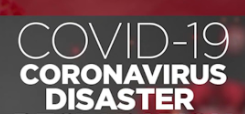7th point suggestion for CoVID_19 disaster management and preparedness at Department of Animal Husbandry and Veterinary, Government of Assam, India
Prepared by Assam Vet Roadmap Project team of Vet Helpline India Pvt Ltd.


Disaster Management
The Department of Animal Husbandry and Veterinary, Government of Assam, is working hard to ease the difficulties faced by animal owners/livestock farmers due to COVID_19 related restrictions. At Vet roadmap project team we have suggested the department for following 7 additional immediate actions in the context of minimizing the loss and ensuring the quality supply of livestock products during and immediately after the COVID_19 lockdown period:
Point-1
Ensure coordination through sector level control rooms at the directorate of Animal Husbandry and Dairy Development. Inform local administrations about the livestock value chain operations and the importance of ensuring the supply of feed and fodder.
Point-2
Direct Veterinary Officers / Dairy Development officers to document adverse events, loss faced by farmers, and other value chain players. Build capacity of officers to guide farmers on alternative feeding strategies, home processing of excess livestock products, use of home-based remedies, etc. Review if existing government facilities can be provided to the interested group of farmers to temporarily convert milk to solid products besides providing assistance for the marketing of the same.
Point-3
Initiate immediate processing/storage/ transport-related training to select entrepreneurs interested in the home delivery of livestock products. Financial /in-kind and operations management related consultancy support may be provided to interested entrepreneurs so that they can sustain their endeavor following a spike in demand.
Point-4
Identify major aggregators and facilitate their activities to maintain the supply chain.
Point-5
Enter into a discussion with value chain critical players e.g. hatchery owners, breeder farms, feed suppliers, etc. to ensure the maintenance of production.
Point-6
Conduct an assessment of the supply situation ( including demand-supply projections for the next few months) of livestock products and infuse funds to government farms (where needed ) to temporarily increase production.
Point-7
Monitor prices and ensure ethical market practices.
Officers can circulate the following documents to interested farmers /entrepreneurs.
Advisory for Livestock Owners during COVID 19 Lockdown -ICAR-Indian Veterinary Research Institute, Izatnagar
FSSAI Guidance document for poultry processing ( dated 06-01-2020 )
Covid_19 Food processing strategy document by Envirocare Labs.
Animal Health and Welfare related suggestions:
- Assign nodal veterinary officers in each district to take the responsibility of continuously monitoring the reports of adverse animal health-related events (if any). He/ she should also act as an officer responsible for animal disease-related risk communication within the district. He or She should immediately approach appropriate authority and report any fake news that can affect livestock business and the welfare of the farm, companion, and work animals.
- Make the utmost effort to maintain availability and access to veterinary services for needy farmers and animal owners. Help them to plan for possible health events, including emergencies, e.g. birth of animals, vaccination, etc.
- Guide local Non-Governmental Organizations/activists in urban areas to focus on a campaign of creating facilities for the shelter of street animals and organize identification, health support, and feeding of such animals within shelters only.
At this early stage, when available data is not sufficient to draw specific conclusions, As per FAO sampling surveys as part of active surveillance for SARS-CoV-2 in animal species can distract time and resources away from other responsibilities of veterinary services.
The state can conduct a risk assessment and critically review local animal husbandry and marketing practices to undertake measures to mitigate the risk of exposure of humans and animals to SARS-CoV-2 from the susceptible wild, livestock, companion, and aquatic animals.
For available mitigation measures and suggested approach for field investigation in animals in the context of SARS-CoV-2 epidemiology Veterinary Services can refer to the following resources:

FAO Animal Production and Health / Paper 181 (2020): Exposure of humans or animals to SARS-CoV-2 from the wild, livestock, companion and aquatic animals: Qualitative exposure assessment
For immediate mitigation measures following resource can be referred to:
The FAO Guidelines (2020) to mitigate the impact of the COVID-19 pandemic on livestock production and animal health: Click Here
COVID-19 and animals: Information on risk mitigation measures for livestock and agricultural professionals ( 8th January 2021 ) Click Here
For detailed scientific update refer COVID_19 portal of
Disaster Preparedness
The following are the 7 -point suggestions for the Department to better prepare for any future challenges arising out of similar emergencies.
We thought of preparing the suggestions at a time when COVID_19 restrictions are still ongoing. We believe that its the right time for the Department to learn from the current difficulties and propose investment for the future.
Recently, as part of the emergency lending fund for India, under the COVID-19 Emergency Response and Health Systems Preparedness Project, the World Bank has sanctioned USD 100Mn for the Department of Animal Husbandry and Dairying (DAHD), Government of India. The DAHD is planning to establish a National Animal Disease Control Centre in coordination with the National Centre for Disease Control. It will help in the detection and prevention of emerging animal diseases, with a focus on zoonotic diseases. The Government of India is likely to request State Animal Husbandry and Veterinary Departments to submit its future preparedness plan for investment in the coming months/ years.
Point_1 :
The Department should help build the capacity of various livestock industry associations so that they can scientifically collect, analyze data, and plan locally for business continuity management and communicate the same to members effectively. The Department should also motivate the industry to develop and manage a business continuity fund based on trade linked innovative resource mobilization. Rules on the use of such funds can be worked out based on collective wisdom. The Department should coordinate with the existing institutional arrangement to help develop a database of livestock farmers / other value chain players for Direct Cash Transfer of grant assistance based on the severity of the challenge and financial status of the enterprise/farmer/other value chain player.
Point_2:
The Department should immediately fund a detailed study to understand the difficulty faced both within the Department administration and across the livestock value chain during COVID 19 lockdown. Such a review will help in preparing a standard operating procedure to act pro-actively in the future to safeguard the interest of the local industry and to ensure a curb on unethical market practices during emergencies.
Point_3:
The Department should join hands with industry associations for GIS-based registration of livestock farm premises. GIS-based registration is essential to facilitate the bio-security implementation, disease reporting, movement of farm inputs during an emergency, and possible future declaration of safe / disease-free zone for minimum trade disruptions.
Point_4:
The Department should recognize the role played by various informal value chain players, e.g., milk traders, traders at wet chicken markets, etc. as they are often in direct contact with consumers. They play a critical role in maintaining the supply of livestock-based food during an emergency. A digital repository of various informal value chain players, with their addresses, contact details, and interest areas at the district level, can be developed. Support should be provided to them to help organize their business ( e.g., quality certification of raw milk supplied by traders as suggested by ILRI study in Assam, support to the establishment of small scale enterprise of solid dairy products e.g. Ghee ). Any initiative to streamline such players will also create demand for locally produced livestock products. Another important aspect to ensure the supply of livestock-based food during an emergency is the strengthening of the formal procurement, processing, and delivery system. Due to inadequate infrastructure, the organized dairy processing sector within the state during the COVID_19 lockdown could not enhance their procurement and appropriately reorient their processing towards solid dairy products.
Point_5:
Concurrent to investment in data quality management, The Department should regularly involve epidemiologists and data scientist/modeling experts who can help predict and manage emergencies. Similarly, the Department should also join hands with clinically skilled private veterinarians, veterinary paraprofessionals, and private laboratories to better manage the delivery of services during an emergency.
Point_6:
The Departments should review its existing disaster management plan based on current learning and work towards improved budgetary provision for stocking of feed/fodder, ensuring other animal welfare requirements during a disaster, etc.
Point_7:
The Department should work with State Disaster Management Authority, and institutions like SITA ( State Innovation and Transformation Aayog ) mandated with the task of ensuring convergence to promote ‘One Health’ concept and importance of multi-sectoral development collaboration from the viewpoint of the Department. Similarly, provision for increased investment is required to improve the internal capacity of the Department to act proactively on public health emergencies and to implement animal disease control measures such as regular surveillance, reporting, investigation, border check, animal movement control, etc. An immediate initiative is required to execute in true spirit the provisions of the Prevention and Control of the Infectious and Contagious Diseases of Animals Act, 2009 by taking actions as per Sections 3, 8,9, and 14.
Click Here for resources on multisectoral collaboration
Justifying the need for the increased budget allocation to the Department of Animal Husbandry and Veterinary:
“The COVID-19 crisis has again highlighted the dangers of our food systems in terms of the release of pathogens. This situation highlights an urgent need for review and further investment in the management of the health of our food systems, of which livestock and farmed aquatic species are a critical element”
Jonathan Rushton, Programme Director, Global Burden of Animal Diseases (GBADs )
The following document can be of help to prepare a memorandum for improved budget allocation:
Strengthening Veterinary Services through the OIE PVS Pathway: The case for engagement and investment ( February 2019 ) Click Here
Post your comment here using the Facebook plugin or mail us at info@vethelplineindia.co.in

We intend to collate your suggestions and submit the same to the appropriate authority within the Department in due course of time.



